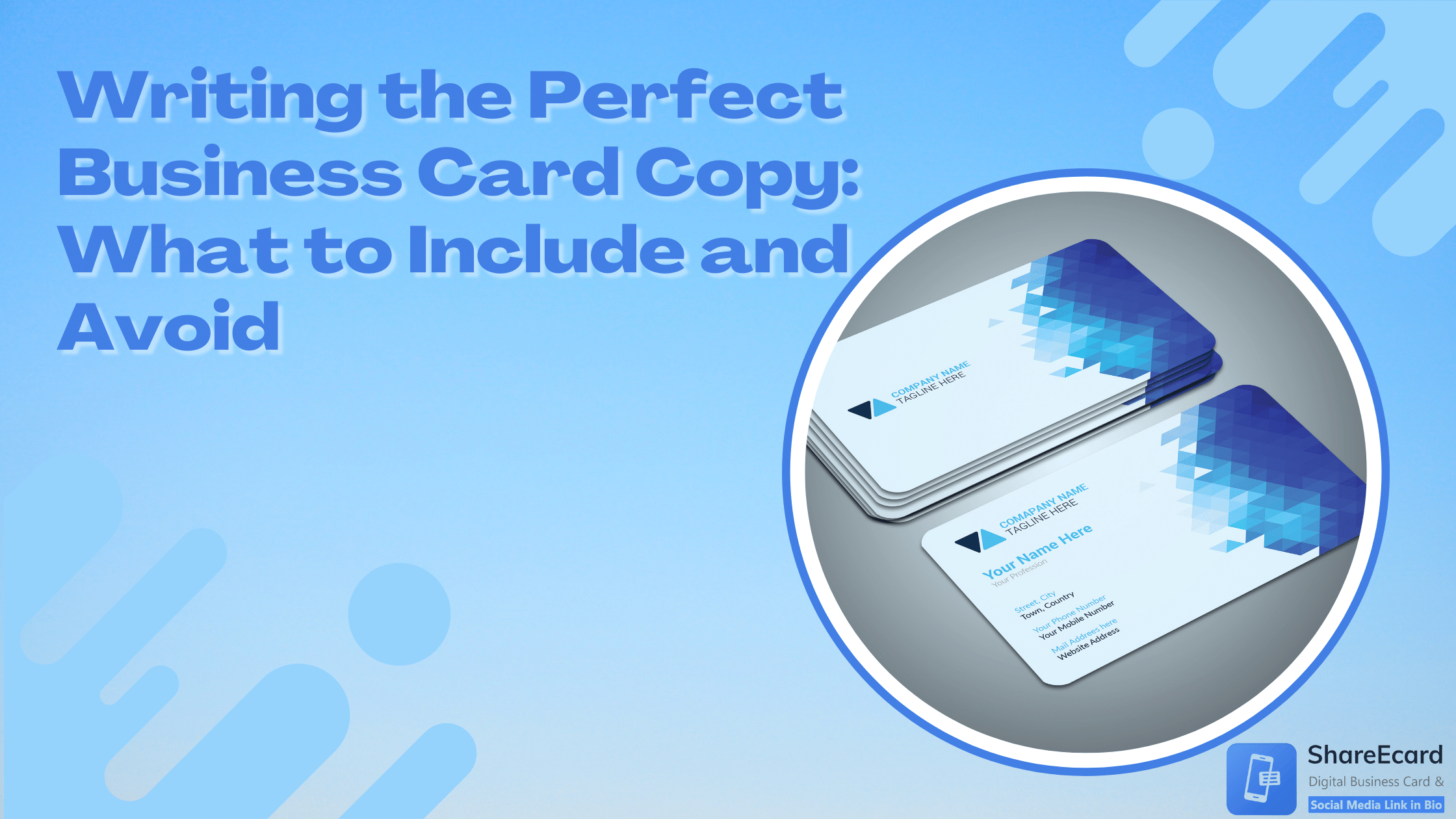Crafting the perfect business card copy is crucial in making a lasting impression. The key is to strike a balance between providing essential information and maintaining a clean, uncluttered design. Here’s a guide on what to include and what to avoid for an effective business card.
Know how to have a perfect business card copy
What to Include
- Name and Job Title: Your name and title are fundamental. They let the recipient know who you are and what you do.
- Company Name and Logo: Clearly state the name of your company. Include the logo to reinforce brand identity.
- Contact Information: Provide your phone number, email address, and business address (if applicable). Ensure this information is current and accurate.
- Website and Social Media: If relevant, include your website URL and professional social media handles. This can direct contacts to more information about you or your business.
- Value Proposition or Tagline: A short, catchy phrase that encapsulates what you or your business does best can be a memorable addition.
What to Avoid
- Overcrowding: Avoid cramming too much information. A cluttered card is hard to read and looks unprofessional.
- Outdated Information: Always update your business cards with your current contact information. Handing out cards with outdated info is a common mistake.
- Tiny Fonts: While you might be tempted to use a small font to fit more information, readability is key. Avoid fonts smaller than 8 pt.
- Overly Fancy Fonts: Choose a font that’s professional and easy to read. Avoid overly stylized fonts that can detract from clarity.
- Irrelevant Information: Only include information that is relevant to your professional persona or business. Personal details should be left out.
- Low-Quality Paper or Printing: A flimsy card or poor print quality can negatively impact your professional image. Invest in good-quality material printing.
Additional Tips
- Brand Consistency: Make sure your business card is consistent with your other branded materials in terms of colors, fonts, and style.
- Cultural Sensitivity: Be aware of cultural differences, especially if you work in international contexts. For example, in some cultures, it’s important to include academic titles.
- Call to Action: Consider including a subtle call to action, such as “Call for a free consultation” or “Visit our website for more.”
- Proofread: Always proofread your business card for typos and errors. It’s worth getting a second pair of eyes to check it as well.
- QR Codes: If space allows, a QR code can be a modern addition to quickly direct people to your website or digital portfolio.
A well-thought-out business card is a powerful networking tool. It should convey essential information clearly and professionally while reflecting your brand’s identity. Keep it simple, up-to-date, and in line with your professional image. Remember, your business card is often the first impression people have of you or your business; make it count!
Make a digital business card with ShareEcard with a perfect copy for free! Create now!




